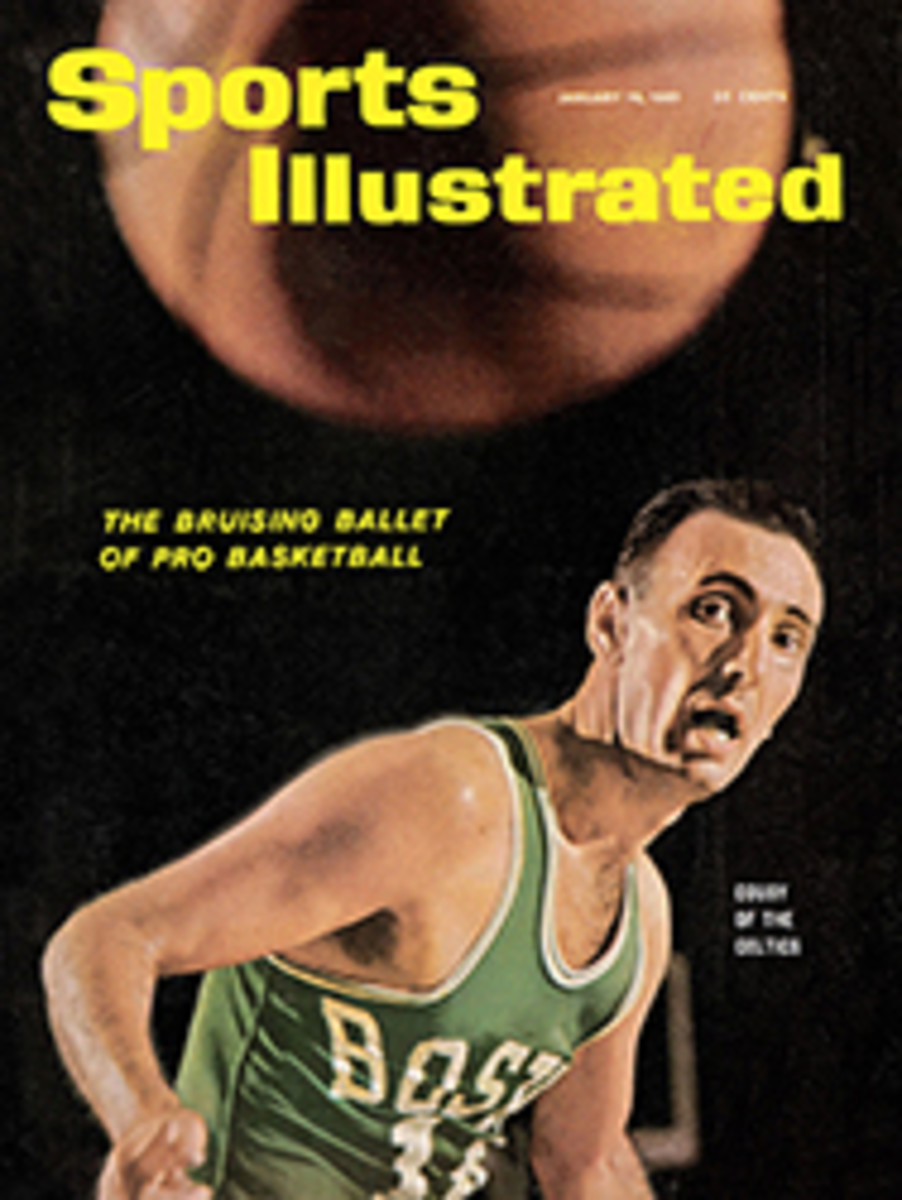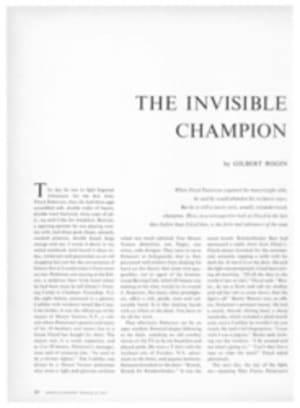
Olympians indoors
America's 73rd indoor track season opens on a transcontinental note this weekend with full-scale meets in Boston and Portland, Ore., 2,540 miles apart. The usual host of male stars will be on hand for the winter program, but a happy new note will be added by a woman—Olympic heroine Wilma Rudolph. This is the first time since the early '30s, when the Polish-American Olympic star Stella Walsh ran indoors, that a female has challenged the traditional box-office strength of the men.
"The Olympic Games made the name of Wilma Rudolph mean something to people," says Pincus Sober, chairman of the U.S. Men's Track and Field Committee. "Suddenly she's a star, with glamour, voted Athlete of the Year in Europe. She'll run at the Millrose Games and at Los Angeles and maybe in a couple of other meets. She's going to create a lot of interest."
"We've never had women's events before," says Marvin Thomas, director of the Chicago Daily News meet, now in its 25th year, "but I've been trying hard to get Wilma and her relay team. And we're not the only ones. A lot of indoor track meets are trying to get those girls."
Naturally, a girl who has just won three Olympic gold medals is going to attract plenty of interest at an indoor track meet. But even if Wilma and her Olympic relay champion teammates (all Tigerbelles from Tennessee State) cause more excitement in anticipation than in performance, this indoor season has a good deal else to recommend it. There are 19 major meets this year, more meets than ever before, and they are distributed over a greater area of the country than ever before, in Boston, New York, Philadelphia, Washington, D.C., Louisville, Cleveland, Chicago, Milwaukee, Winnipeg, Los Angeles and Portland. There will also be an unusually choice collection of foreign runners and jumpers.
"I've got acceptances from a fine list of foreign athletes," gloated the AAU's white-haired Dan Ferris in his New York office last week. "I may even get Shavlakadze and Brumel, the two Russian high jumpers who beat John Thomas at Rome, and Pyotr Bolotnykov, Russia's Olympic 10,000-meter champion."
Among those definitely set to come from abroad is Istvan Rozsavolgyi, the skinny, popular Hungarian who was the bronze medalist in Herb Elliott's world-record-breaking 1,500 meters at Rome. Rosy has been here twice before and pushed Ron Delany to his indoor mile record of 4:01.4 during the 1959 season. Also coming are Terry Sullivan, a tall, thin, mustachioed Southern Rhodesian who looks like one of Ernest Hemingway's white hunters and who has among his trophies a 3:59.8 mile and wins over top U.S. Milers Dyrol Burleson and Jim Grelle; Roger Moens, the high-strung Belgian who was second in the Olympic 800-meter run and who still holds the world record of 1:45.7 for that distance; Ireland's Ron Delany, out of action last winter and a big disappointment at Rome but undefeated in 34 consecutive indoor miles and now back in first-class condition; Murray Halberg, New Zealand's lame-shouldered Olympic 5,000-meter champion, due to run this weekend in Portland and who last week in California set a U.S. two-mile record of 8:40.8; and two others already in school here: Australia's Al Lawrence, the Houston junior who holds the indoor two-and three-mile records, and England's Fred Norris, the 39-year-old McNeese State freshman who defeated Lawrence in the recent Sugar Bowl 5,000-meter run.
To match the foreign challenge the U.S. will have 30 or 40 of its Olympic team members available. "Things are shaping up too good," bubbles Fred Schmerz, directing his 39th Millrose Games. "I'll have between 25 and 30 Olympians for my meet and there's no doubt about a sellout. But there's a problem I hadn't counted on. It used to be that the Olympic stars I wanted all came from the East. Now they come from the Midwest, the Southwest and the Far West as well. My transportation costs are way up."
Some U.S. Olympians have retired or have turned professional, but among those fairly certain to appear more than once on the indoor circuit are Hurdlers Willie May and Hayes Jones; Middle-distance Runners Otis Davis (Olympic champion and world-record holder at 400 meters), Ernie Cunliffe and Jerry Siebert; Distance Runners Dyrol Burleson, Jim Grelle, Max Truex, Jim Beatty, Bill Dellinger, Deacon Jones and Pete Close; Pole Vaulter Don Bragg (still determined to clear 16 feet); Broad Jumpers Ralph Boston and Bo Roberson (both determined to leap 27 feet); and High Jumper John Thomas.
The roll of Olympic names has a classic ring to it, to be sure, but no one should be surprised if the rhythm sputters a bit before spring arrives. There is nothing a non-Olympic athlete likes better than the scalp of an Olympian. By March the list of indoor heroes will include a good share of names that no one had heard of in January.
PHOTO
LEAN HUNGARIAN miler, Istvan Rozsavolgyi, heads a strong foreign invasion.

